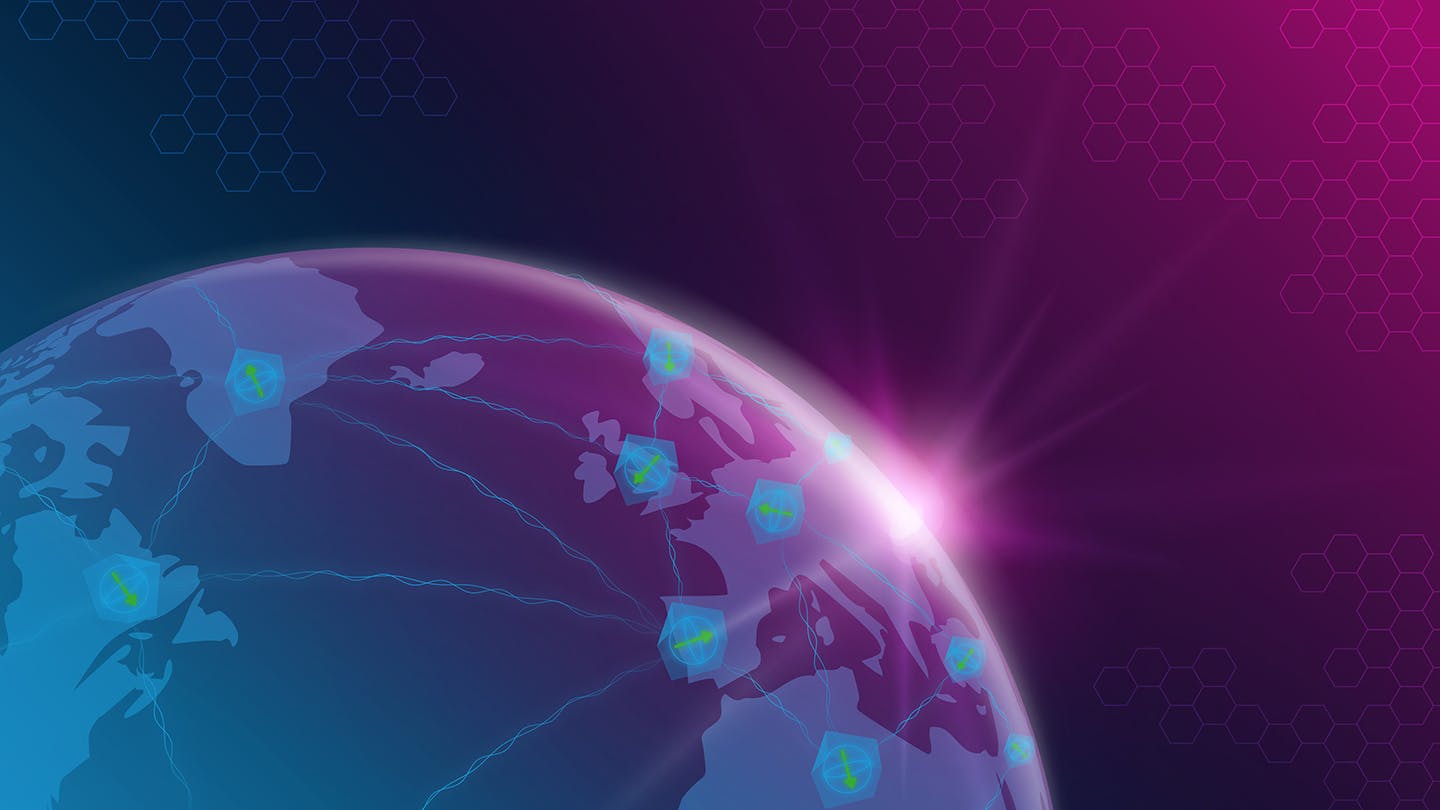Quantum Networks
What is a quantum network?
A quantum network is very similar to the kind of network, i.e. the internet, we use to send and receive digital information, from sharing Facebook posts to uploading videos to TikTok. Like the most famous network of all time, the internet, quantum networks are composed of interconnected computers.
How are quantum networks different from the internet?
Digital information sent via the vast global internet network, connecting billions of computers, is processed and transmitted only as zeros (0) and ones (1), known as classical computer bits. Quantum networks, however, use quantum bits (qubits). Qubits carry information in an entirely different way compared to classical bits because of their quirky quantum nature.
Quirky concept: Superposition
Unlike classical bits which can only be either 0 or 1, qubits can be in multiple states at the same time – a principle known as superposition. This can be thought of in terms of a coin: if tails is 0 and heads is 1, then a spinning coin offering limitless possible answers in between 0 and 1 is exhibiting superposition.
Quirky concept: Entanglement
Another feature that sets qubits apart from classical bits, is entanglement. Simply put, entanglement can be thought of as a strong connection between two qubits. If you measure the state of one, you can determine the state of the other, even if they are far apart, e.g., one in New York and one in Delft.
Quirky concept: Quantum measurement
Qubits are also special in the sense that measuring them changes their state. While this property has its benefits, such as exposing eavesdropping attempts, it also requires very special hardware to enable qubit handling.
Handling and transmitting qubits: components of a quantum network
These distinct quirky concepts mean that most of the physical elements composing a quantum network need to be fundamentally different from the conventional hardware used for the current classical internet. A quantum network is made up of the following main elements:
- Physical connections: standard telecom fibres (fibre-optic channels) can be used. These channels are, however, inherently very lossy – so transmitted qubits can cover only short distances before their quantum information is lost. A quantum channel covering large distances, therefore, requires quantum repeaters.
- Quantum repeaters: these repeat and improve the quality of the signal. A quantum repeater is necessary for establishing long-distance communications on a quantum network. Quantum signals cannot be amplified using classical repeaters and amplifiers, since any qubit manipulation (measurement) changes the qubit’s state, and thus the information it is carrying. Researchers at QuTech are working on developing quantum repeaters that employ quantum teleportation and so-called entanglement swapping, to repeat and amplify the signal without changing the quantum information.
- End nodes: these are quantum computers (processors) for manipulating quantum information, for example preparing and measuring the qubits, establishing entanglement, applying quantum logic gates, and performing error correction.
The quantum network infrastructure also includes switches and conversion elements that allow qubits to be transmitted over existing telecom cables.
A quantum internet will additionally require specialised software to control hardware, manage quantum-internet traffic, and run applications on connected quantum computers.
What will quantum networks do?
A quantum internet promises improvements that are impossible to achieve with current technology – all the way from security, healthcare, agriculture, water, and food supply through to energy, sustainability, mobility, and logistics.
Security
We use the internet constantly, from online banking to sending email. Continuous, reliable, and safe exchange of information is secured using encryption, but current encryption methods are unfortunately not immune to cyber-attacks. Importantly, the arrival of quantum computers poses a serious threat to existing encryption methods. A quantum internet uses entirely different encryption to protect our data against cyber-attacks.
A Quantum Cloud
Combining quantum communication with quantum computers will bring future quantum benefits closer. Building a single computer with a high number of logical qubits is still very difficult, but if we use quantum networks we can link multiple smaller quantum computers. By using such distributed computing, the system behaves like one virtual large-scale quantum computer.
Improved Scientific Instruments
High precision timing plays an important role in applications such as the Global Positioning System (GPS), gravitational wave detection systems and radio-astronomy. Quantum entanglement can be used to create instant coordination between two places, enhancing the accuracy of global positioning, gravitational wave detection and giant telescopes.
What are quantum networks made of?
Quantum Hardware
In order to build a quantum network, there are two important components: a quantum processor node and an interface to link two or more systems over a distance.
Related publications
- Kimble, H. J. The quantum internet. Nature 453, 1023–1030 (2008). https://doi.org/10.1038/nature07127
- Wehner, S., Elkouss, D. & Hanson, R. Quantum internet: A vision for the road ahead. Science 362 (2018). https://doi.org/10.1126/science.aam9288
- Pant, M. et al. Routing entanglement in the quantum internet. npj Quantum Information 5, 1–9 (2019). https://doi.org/10.1038/s41534-019-0139-x

